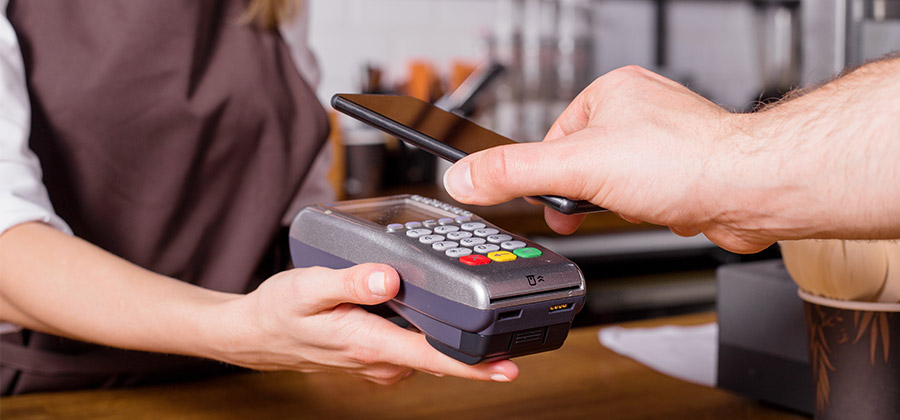From 1 July 2017, companies will be able to send their invoices to federal agencies in electronic format. See below for the changes and what you can expect from Mercurius.

A European commitment
By 2020, the European Commission plans to make electronic invoicing the most commonly used method in Europe. Hence Directive 2014/55/EU on electronic invoicing in public procurement sets out the obligation for authorities of Member States to receive and process their invoices in electronic format.
With the exception of decentralised authorities – which will be given more time – all authorities must guarantee implementation of electronic invoicing by 27 November 2018 at the latest. The goal is twofold: to save money on the one hand and to save time and increase efficiency on the other.
Belgium has been working on electronic invoicing since 2013. The government had to replace its supplier interface with a standard PEPPOL interface to comply with the directive, but things have started to move during the last few weeks. Federal authorities have taken several steps under the direction of the Agence pour la Simplification Administrative [Office for Administrative Simplification].
Fedict (the Federal Public Service for Information and Communication Technology) launched the Belgian electronic invoicing platform. It is worth knowing that until recently, one of the main obstacles to rolling out electronic invoicing continued to be the existence of several networks that required data to be converted before it could be processed by dedicated software. The federal body has been working on a platform for the Belgian authorities since 2013. It is now compliant with European standards (OpenPEPPOL). The platform's name is Mercurius.
"e-invoicing of the government by companies (B2G) and e-invoicing between companies (B2B) are closely linked. It is highly unlikely that the first can become a reality without implementation of the second."
FEDICT
Aim for 2020
A plan was adopted by the Cabinet on 12 May, which consisted of a road map comprising three stages. The Agence pour la Simplification Administrative will be in charge of monitoring execution of different action points in this programme.
- From 1 July, any company that wishes to do so will be able to send their invoices in electronic format to federal authorities via Mercurius.
- After 1 January 2018, for every public contract of an estimated value of €135,000 excl. VAT (and above) approved by federal contracting authorities, the contract documents must mention the obligation to send invoices electronically.
- Finally, on 1 January 2020, the federal contracting authorities will only accept electronic invoices.
01.06.2020
The art of negotiating payment terms with suppliers
Cash management is an SME's frontline weapon, and payment terms are a key means of keeping it under control – providing companies proactively open negotiations with their suppliers. But this solution remains underutilised by entrepreneurs
Cash flow difficulties are the number one cause of company bankruptcy in Belgium. Business owners face a constant battle to stay in control and maintain the balance of their inflows and outflows. Negotiating payment terms is one of the levers that can be employed: shortening them for customers while extending them for suppliers. In Belgium, the statutory deadline between companies is 30 days. Yet the reality can be different, since either trading partner may deviate from the rule. Where one of the parties is in a dominant position, the other is often obliged to accept the conditions it imposes... meaning its payment term becomes longer. Everything is negotiable, however, even with "big" suppliers, as long as you formalise the situation and ensure you protect your business relationship.
Who is your supplier?
They say information is power, and there is some truth in this. Indeed, the more you know about your "opponent", the more you will be able to turn the tables. How are the company's finances, and what is its cash position? Is it experiencing difficulties? Where is it placed on the market, particularly in relation to its competitors? What is your dependency ratio in relation to this partner? How does it make payments, and what is its purchase history? The answers to these questions will allow you to take up better positions in the negotiations, and find the best angle to launch an attack that catches the other side by surprise. Specialised websites, data banks, word of mouth (the competition): all means are justified in order to find out more!
What do you want to gain?
And a resulting question: what are you willing to put on the table to achieve your objective? In other words, you need to be properly prepared and establish a strategy regarding what you are willing to concede (and how much this will cost you) and what you absolutely want to gain in return. Remember that the other party has presumably not requested anything, and potentially has little to gain. Therefore, you cannot arrive empty-handed. Are you willing to order larger volumes in order to extend your payment terms? Can you envisage a long-term contractual commitment? Could you contemplate paying more in return for spreading your debits further? Imagine you are playing poker: clearly, you should keep your cards close to your chest. Wait for the right time to show your negotiating partner that you are prepared to make concessions.
How can you negotiate successfully?
The art of negotiating is a difficult skill. However well prepared you are, keep the following principles in mind:
- Even if you have brought a proposal to the table, listen to the other side and pay attention to detail so that you can react quickly.
- Do not be frightened of bearing your teeth a little, even if you are concerned about spoiling the business relationship with your supplier. Stand your ground and mention what the competition can offer you, for example.
- You must control how you communicate, so that you avoid giving the impression that you have cash management problems. Emphasise that payment delays do not help anyone, and that it would be better to agree on a reasonable and sustainable schedule.
- If your business relationship is established, mention your positive partnership and your desire to see this continue.
- During discussions, regularly refer to how far you have come and your shared progress to date. This positive tone will be well received.
- If the negotiations stall, try to resolve the difficulty by pulling out a trump card, for example (i.e. a concession).
- Remember: a good agreement is balanced, and leaves neither party feeling wronged. So do not be too greedy: the outcome must be worthwhile.
- Are you happy with the situation? Move to finalise the deal, either by accepting what is on offer or by finally opting for a fair compromise.
14.06.2018
The EU comes to the rescue of the retail sector
In order to support one of Europe's key economic sectors, the European Commission has drafted a series of practical and effective best practices and recommendations to help member states formulate their retail policy.

Nearly one in ten people works in the retail sector, which comprises more than 3.6 million companies. Retail generates 4.5% of the EU economy's added value, and absorbs up to one third of household budgets. It is an important source of economic vitality and a leading employer, but retail is experiencing tough times. Between the power grab by large store brands and the expansion of digitisation (via e-commerce), competition is rampant for small retailers. Yet the potential of the sector remains huge for retailers who manage to embrace change, especially with regard to evolutions in consumer behaviour and the way products are bought (and sold). This is a vital test for the fabric of the EU economy and its labour market.
A guide for national authorities
The EU appears to have grasped this, since the Commission has just published a best practices guide to modernising and revitalising retail. "Facing the future" contains advice and success stories and is designed to be instructive. Its primary function is to provide help and support to local and regional authorities in member states, enabling them to implement measures promoting innovation, productivity and competitiveness in the retail sector. They can then create a favourable climate for their SMEs (often very small, family firms) to continue to grow by seizing the opportunities of today, especially those offered by technology.
Progress needed in a range of areas
The Commission has identified three major aspects of retail where member states can make progress in this regard. Firstly, it wants the creation of retail outlets to be made easier, especially by reducing undue or disproportionate charges and by simplifying the procedures involved. Secondly, EU countries are encouraged to alleviate restrictions associated with the day-to-day operation of stores. These concern the promotion of sales and discounts, own sales channels, opening hours, specific retail taxes, carrying out transactions within the EU, etc. Finally, the Commission is urging member states to adopt innovative solutions to support the vitality of city centres.
One guide, six measures
"Facing the future" highlights six measures that local and regional authorities should put in place to achieve this:
- Improve digital and public infrastructure, in particular in order to encourage retailers to take on board new technologies.
- Share the "right" kind of information with retail outlets, in societies where data is becoming an increasingly essential tool.
- Help to build strong communities based on working together.
- Remove the barriers to working with digital technology, to help retailers remain competitive and adapt to changes in the market. The Commission identified Digital Wallonia's "Commerce Connecté" project as an example.
- Support the development of knowledge and skills, especially with regard to new technologies and improving the customer experience.
- Provide guidance on marketing and communications to help retailers enhance their profile.
It should also be noted that the document highlights the "Shopping in Flanders" strategy put in place by the Flemish government in 2012. As a final point, the guide suggests a method for assessing the current national situation in the sector, and a process for evaluating the impact of measures in place.
To find out more, read the "Facing the future" guide.
07.06.2018
The war of the buttons: MasterCard and Visa stand up to PayPal
The battle is on to become the dominant payment method of the future. PayPal may be the dominant force in the online payment sector, but the two giants – Visa and MasterCard – plan to break its stranglehold by joining forces.
Shopping online has never been easier for consumers, who can make their internet purchases in just a few clicks. Yet they are always looking for more: more speed, flexibility and mobility... they have more demands than ever! The industry players, led by PayPal, are all too aware of this reality: the US provider has become the leading online payment service by simplifying the pathway for web customers. So how did it do it? Aside from its money transfer services, the Palo Alto heavyweight offers its customers a "one-click" checkout service by gathering users' banking information in advance and storing it in their accounts (in a so-called digital wallet).
PayPal's payment shortcut has attracted envy, especially at Visa in San Francisco and MasterCard in the village of Purchase in New York state. And with good reason, since the two "oldies" had also launched their own payment solutions: Visa Checkout in 2014 and Masterpass in 2012. One can only conclude that these digital wallets have not been able to topple PayPal from its perch. But although they are in competition in various segments, the world's two largest credit card networks will surely hit back.
A few clicks make all the difference
You will have understood that the battleground is e-commerce, and the principal weapon is the single button that allows customers to check out. It is this button that means the customer no longer needs to leave the sofa to find their wallet or enter their details for the umpteenth time, and can now skip the various confirmation stages. According to information obtained by the financial website Bloomberg.com, Visa and MasterCard plan to join up with American Express and Discover to launch their own shared button, in a combined show of strength intended to counteract PayPal's dominance.
"Strength in unity", says the well-known Belgian motto. But PayPal is one step ahead in this case, it must be said. According to a recent survey (caveat: it was partly funded by the Palo Alto company), almost 58% of US retailers accept PayPal's technology, whereas only 36% of them offer their customers the option of Visa Checkout and just 16% offer Masterpass.
The one-button concept
PayPal may have pioneered this niche, but the alliance formed by these four companies to produce a shared technology heralds a united front, not forgetting other market forces (Android Pay, Apple Pay, Amazon, etc.) and the arrival of cryptocurrencies as a payment solution. In any event, the new one-button checkout process resulting from the merger of Visa Checkout and Masterpass looks set to be unveiled in 2019. The objective remains to offer customers a faster and more efficient online purchasing experience. But to achieve this, Visa and MasterCard must firstly convince retailers to offer it, and then work in tandem with the World Wide Web Consortium, which sets standards for internet browsers.
Though the new digital wallet is yet to be given a name, among the advantages it should offer is greater security, based on the token technology used by the two credit card giants. This has two benefits for customers: instead of using the bank card number, a unique ID is created for each transaction; secondly, data can be kept up to date more easily. The online payment turf war promises to be fierce!
25.05.2018
The digital wallet: a "weapon of mass payment"?
Digital wallets have been around for some time, but now look likely to become the default virtual payment method of the future. And with good reason, since they offer much more than mobile transactions.

What is a "digital wallet"? As the name implies, this is a wallet used via digital means such as a smartphone, tablet or computer (it can also be called a "mobile wallet"). It is a digital application allowing users to collate all their financial information in one place, from all their bank details and credit and debit card information to loyalty schemes, promotional offers, tickets, personal details and more. It is a genuine wallet with a big bonus – it also offers connectivity and services, anytime and anywhere. And digital wallets have many more benefits besides: they enable faster, contactless payments and easier deposits, and let users keep on top of their spending and manage their day-to-day budgets, etc. And while their popularity is growing thanks to the progress of technology and increasing take-up by both consumers and retailers, the market is still buoyant too.
From PayPal to Apple Pay
The digital revolution is ripping up the payment method rulebook, both in relation to how consumers themselves make payments and the facilities offered by retailers. Digital wallets are certainly part of the pattern in this respect, as one of the tools of the present and the future. Yet the idea is not a new one. In the 1980s, David Chaum had already created DigiCash, a precursor to virtual payment methods. Then in 1998, PayPal emerged as a solution for buyers on eBay, allowing them to simplify the payment process by storing their credit card. This was the first sign of the digital wallet revolution... but despite the launch of Google Wallet in 2011, the next decisive step forward in the process was not until 2014 and the arrival of Apple Pay, closely followed by a series of competitors (Samsung Pay, Android Pay, Visa Checkout, etc.). Even though it wasn’t the runaway success experts predicted, use of digital wallets is continuing to grow.
Creating added value around the transaction
A digital wallet is more than just a means of making payments. Akin to a "digital Swiss Army knife", it allows its owner to centralise all their financial information (and perhaps more) without carrying everything around in their pocket. The result is easier purchases and greater security in comparison with more conventional payment methods, especially through the use of data encryption. But there are also advantages for retailers: these include transaction processes which are faster, more flexible and accessible, which in turn improve the flow of customer in-store journeys and increase conversion rates for online purchases. But that's not all. Digital wallets provide more methods of communication, more targeted and effective customer loyalty incentives, stronger customer relationships, advanced reporting tools and more. A set of benefits which each take their place in a secure ecosystem.
Millennials are in the know
If digital wallets are becoming the norm, it is because every day, mobile payments are gaining ground on the path towards an ever more cashless world. The number of payments made by smartphone has skyrocketed in recent years. According to the German statistics body Statista, mobile transactions have risen from 5.5 million in 2009 to 64 million in 2016 in Europe alone, a rise driven by usage among younger generations in particular. It is estimated that almost 8 in 10 European millennials (digital natives born between 1980 and 2000) use their mobile phones to make financial transactions and manage their savings. Mobility, practicality, immediacy, connectivity, added value and real-time operations are the demands of these consumers, and the digital wallet is riding the crest of the wave in order to become a crucial tool in the lives of these generations. It still remains that in a forever changing world, the payment market is not yet fully mature; dozens of innovative digital solutions, all with their own ecosystems and benefits, continue to abound. The ultimate app is still in the making...
